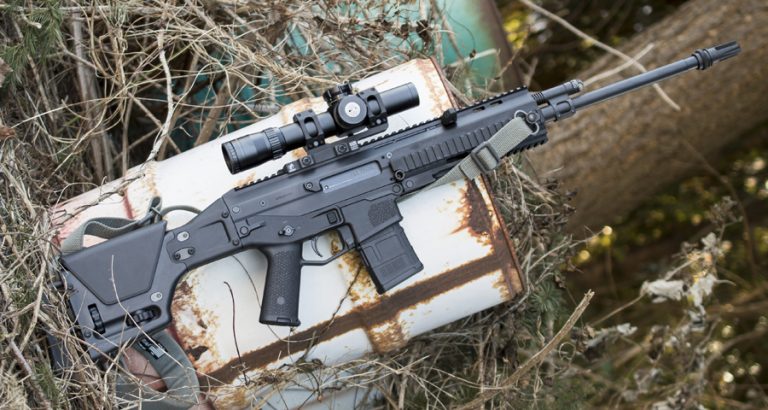
The United States is the single largest civilian firearm market on earth. And within that market, one rifle reigns supreme: The AR-15. And for good reason. It's pretty much everything you could possibly want in an everyman's rifle. Available in everything from coyote to moose calibres, weighing no more than your average bolt-action rifle, having less felt recoil, providing superb accuracy, and highly modular, it probably is the best rifle of the 21st century. And not surprisingly, because of all that popularity, it's cheap too.
As a result of this momentum, the majority of North America's rifle manufacturers have been relatively recalcitrant to develop new designs that depart from the AR-15 platform, lest they give up ground to a competitor. Hence, we Canadians are often forced to look abroad or to niche markets to find a similarly modern semi-automatic rifle, and oftentimes the things we find end up costing far more than an AR-15 ever would. The Bushmaster ACR DMR is one such rifle.
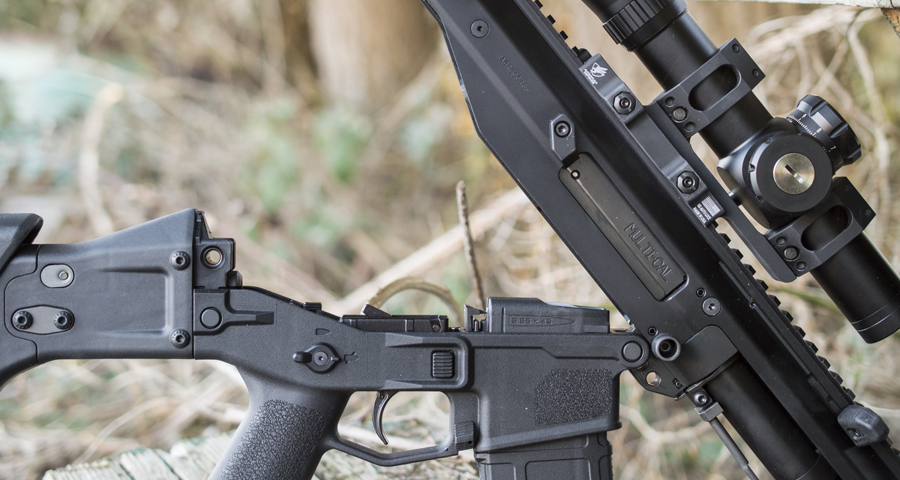
As a result the ACR and its chief competitor, the FN SCAR, were forced to turn to smaller procurement markets for their success… special operations and foreign forces. Unfortunately for Bushmaster though, the SCAR became the preferred non-M4-pattern rifle of most US special operations forces, while the ACR had to go all the way to Poland to find success with the Polish Military Intelligence Service known as the Służba Wywiadu Wojskowego, or SWW. There, the ACR has been so well loved that the Polish firearms manufacturer Radom has commissioned a new ACR-based modular rifle known as the Radom MSBS, for issue to all members of the Polish military.
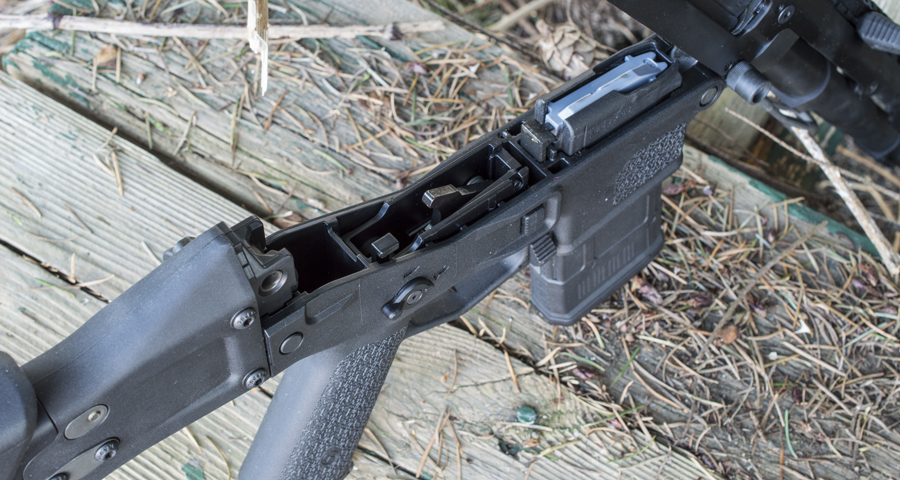
That meant anyone desiring to actually own a non-restricted ACR needed to get a new barrel fitted by a Canadian gunsmith; a relatively time-consuming and expensive process. Which is precisely why the debut of the Bushmaster ACR DMR, with a factory-fitted 18.5" barrel, was so compelling when it broke cover in 2014. Unfortunately, again the preference for the AR-15 and M4 pattern of rifles impeded the ACR's progress, and a combination of war efforts in the Middle East and a civilian penchant for ever-more AR-15s conspired to keep the ACR DMR out of production until the fourth quarter of 2016. But it's here now.
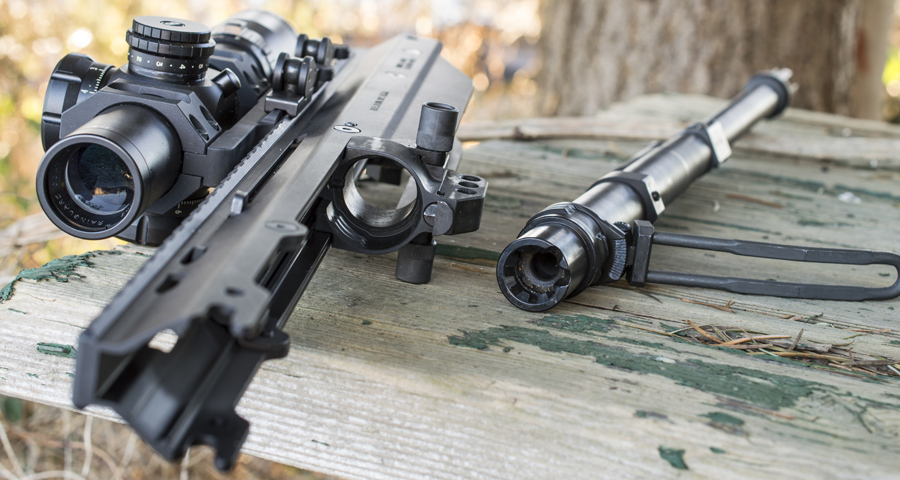
In the past ACRs have been available with either a fixed or folding stock, both of which incorporate particularly brilliantly adjustable cheek risers, while the latter also adjusts for length of pull. The ACR DMR, however, uses a Magpul PRS2 stock specifically designed for the ACR. With threaded adjustments for both length of pull and comb height, this stock allows for fine adjustment in both directions, but sadly does not incorporate the conventional PRS stock's railed lower portion; precluding the use of a stock-supporting monopod.
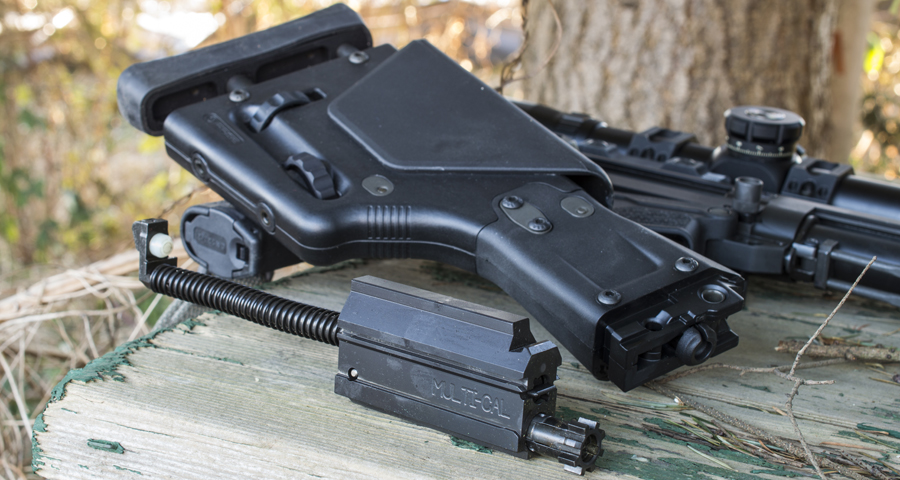
Which brings us to the ACR DMR's most important feature; the barrel. Measuring 18.5" long, this wonderful piece of forged stainless steel is notable for a few different reasons, the most important of which is obviously its fulfillment of the Canadian firearms act's requirement that non-restricted semi-automatic rifles possess a minimum barrel length of 18.5 inches.
But there's more to it than that. First off, it's heavy… almost ridiculously so. Measuring 0.98" across from the breech to the op rod guide, 0.90" to 0.85" between the op rod guide and the gas block, and 0.73" from the gas block to the muzzle device it is one of the heaviest barrel profiles you'll find on such a rifle. Also, although the bolt is marked "multical," that beefy barrel is chambered in 5.56 NATO. The rifling is cut to match the current standard for most 5.56 NATO rifles, with a 1-in-7 inch twist rate.
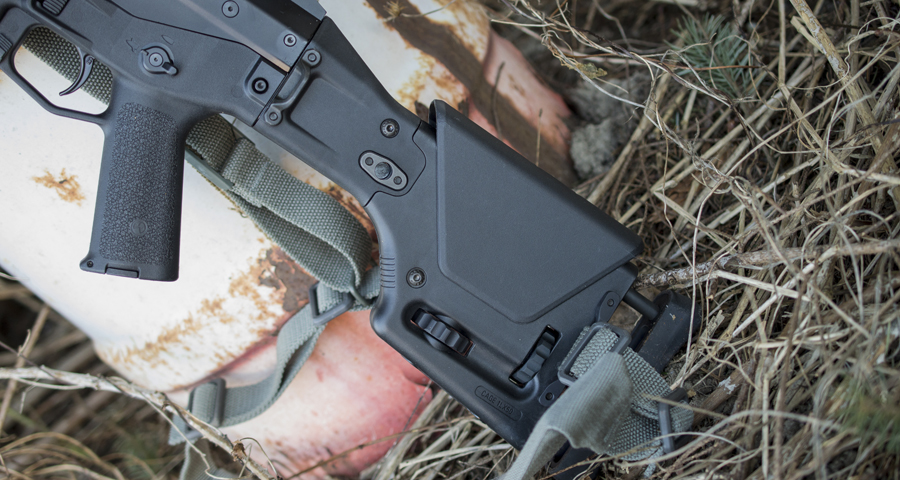
The ACR DMR arrives, like so many other premium Bushmaster firearms, in a relatively staid Bushmaster box containing (in grand Russian nesting doll fashion) a Bushmaster-branded Flambeau rifle case. And inside that is the ACR DMR, safely bagged in plastic, the ubiquitous and always unloved cable rifle lock, and one 5-round Magpul Pmag.
And undoubtedly, the first thing anyone will notice when they pull the DMR out of its case is the overall weight of the thing. Out of the box, sans sling, optic, magazine and ammunition, our test rifle tipped the scales at ten pounds even. As pictured here, with a Bushnell Elite Tactical 1-8.5x24mm optic in an American Defense Manufacturing Recon mount, and a Blue Force Gear VCAS sling, the entire thing weighs 12.5 pounds; definitely on the portlier side of things.
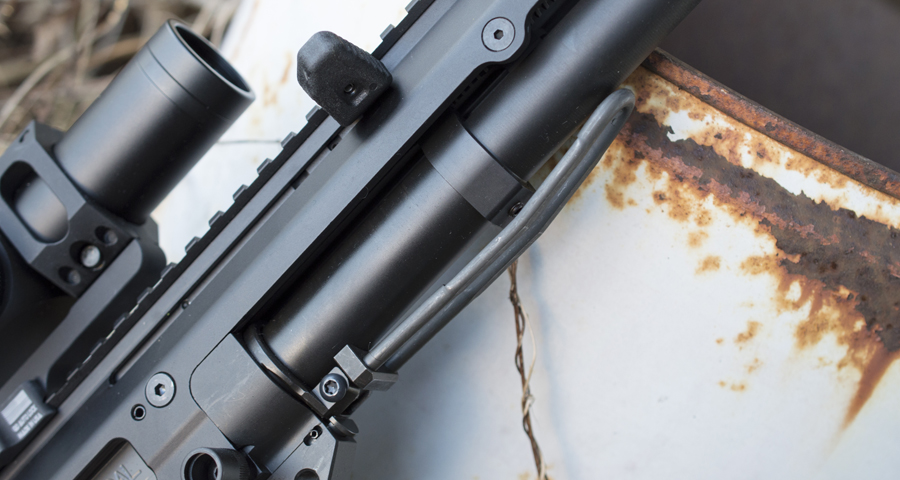
Likewise, we also love the controls for their similarly well-thought out nature. The bolt release is a pair of paddles on the front of the trigger guard; easily depressed by either the trigger finger or a thumb upon reloading. The magazine release is both oversized and ambidextrous. Rounding out the lefty-friendly nature of the ACR is an ambidextrous safety.

Likewise, we also must mention that although the charging handle is in a fantastic position in terms of manipulation and leverage, it does travel through a not insubstantial amount of space on the handguard. In fact, we had initially mounted our optic in a standard-style mount, but the forward scope mount clamp did not allow enough room for us to cycle the charging handle fully rearward. Also, although we've not installed any such devices, we suspect things like PEQ-15s, lasers, and lights would all restrict either access to, or movement of the charging handle.
Now, it's at this point that we must point out that this is a non-restricted black rifle, which already makes it one in a relatively small subset of rifles, but the ACR goes even farther by being a very specialized rifle; it isn't called a DMR for nothing. This is intended to be used in the role of a designated marksman's rifle. Hence the heavy, but accurate barrel and heavy, but adjustable stock. We did most of our testing off either a lead sled when trying to test the rifle's mechanical accuracy and off a shooting bag for the rest of our testing. It's not something you're going to want to run around doing drills with and holding in an offhand position for long.
But if you're looking for something that will allow you to take advantage of the limitless ranges at which you can shoot on Crown land… well, this may be your rifle. Perched atop our well-seasoned Vertx range bag (which makes an excellent rifle rest, by the way) the ACR DMR was a treat to shoot. The Magpul PRS is a fantastic piece of equipment, and with its adjustable length of pull and comb height allowing us to get comfortable behind the gun, we were able to string together groups of comparable size to those that we shot off the lead sled. And that's a good indication of the rifle's sort of intrinsic performance insofar as how well it marries man and machine.
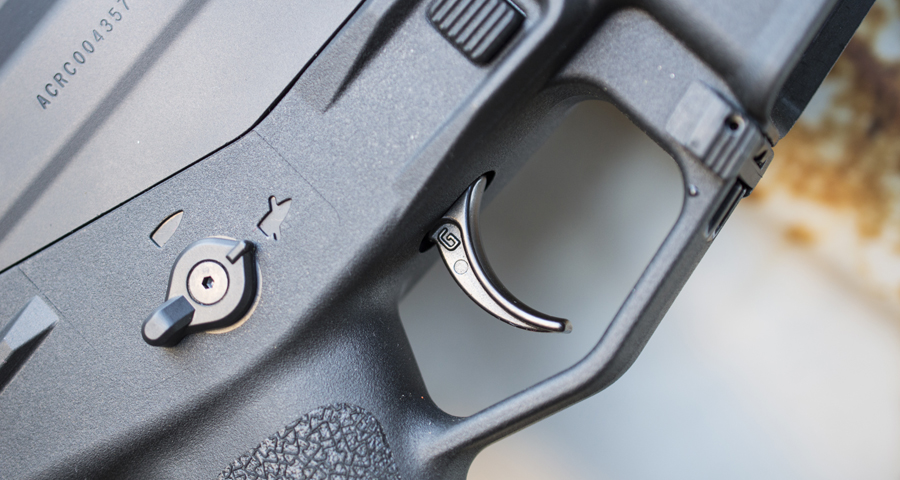
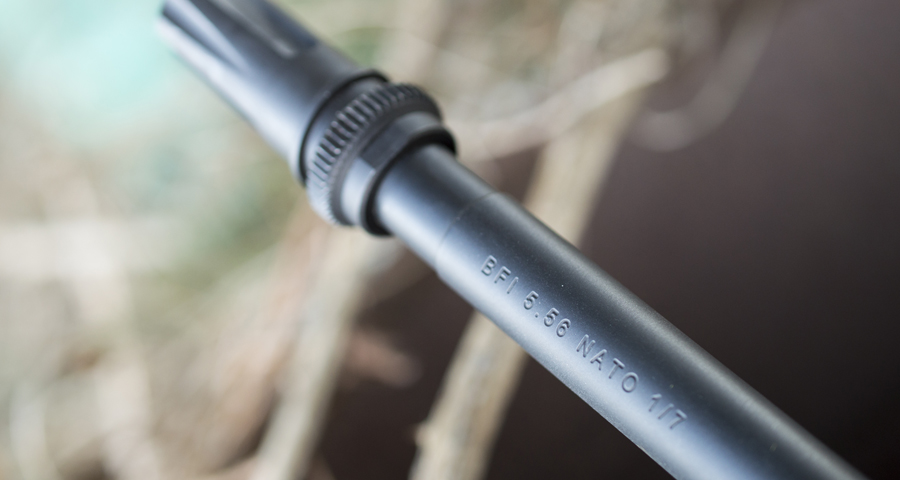
Overall, the impression of shooting the ACR DMR is one of capability; the rifle's so easy to set up and shoot that you can concentrate on your shooting technique. You needn't adopt an unnatural position to get behind the gun. You needn't break your shooting position to load the next round. You needn't anticipate any significant recoil. You don't even need to remove your hand from the grip to operate any of the controls, regardless of if you're right- or left-handed. Simply concentrate on breathing, trigger control, and sight picture.
In terms of reliability and performance, the ACR has proven to be one of the most reliable rifles we've ever tested; it's literally never not worked. Now, in all fairness, we've had other rifles that have proven to be 100% reliable… but we've never shot a rifle with as many different varieties of ammunition or magazines as we have the ACR DMR.

But if we're honest, we expected as much from the ACR DMR; being a premium piston-drive gun there's no reason to think it'd ever choke. But the ACR doesn't have the best reputation for accuracy. Due to the nature of its quick-change barrel system, it's hard to manufacture such a rifle on a large scale and do so with a high degree of accuracy, and most ACRs are known for being "battlefield accurate." In other words, 2-4 MOA, or perhaps slightly better. The DMR is not like other ACRs though, evidently.

The Bushmaster ACR DMR is many things. Accurate, reliable, heavy, and expensive. But it's also rare. As previously discussed, ACRs remain a relatively uncommon rifle in all circles, and with only 100 ACR DMRs having come to Canada in the first shipment these particular rifles are unlikely to ever become common.
And although Bushmaster's importer, Gravel Agency, is looking forward to additional shipments throughout 2017, the combination of the rifle's niche appeal and $3,399 retail price relegate this rifle to somewhat exotic status.
But if you happen to be in the market for something non-restricted, that's not only capable of, but rather particularly well suited to longer range shooting, this is a great rifle. So great, in fact, that we lightened our own wallet in order to purchase the rifle pictured here. That makes it 99 out there and counting for now...